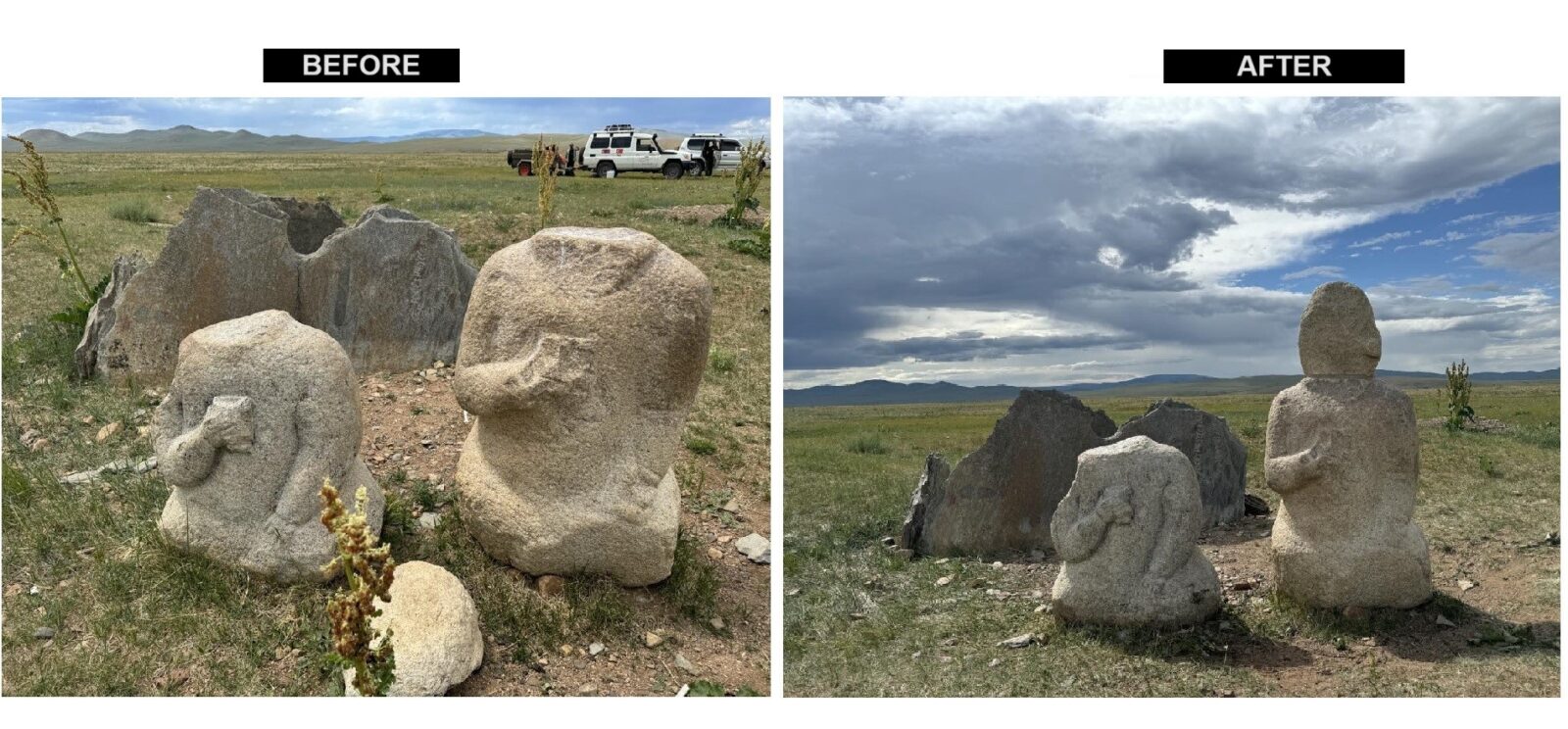
Artifacts from the Gokturk era, damaged and at risk in Mongolia’s Arkhangai, Ovorkhangai and Tov provinces, have been restored with the support of the Turkish Cooperation and Coordination Agency (TIKA).
The restoration work, carried out by Turkish and Mongolian experts, included photogrammetric documentation, restitution and maintenance of the artifacts.
Historians and archaeologists are piecing together the rich tapestry of nomadic life in Mongolia thanks to the discovery of hundreds of ancient human-shaped stones called "balbals."
Over 785 balbals have been unearthed across Mongolia, with many originating from the Gokturk era. These statues represent a continuous thread linking various nomadic empires, including the Bronze Age cultures, the Gokturks, Uyghurs, Khitans and even the Mongols.

The TIKA has initiated a project to restore artifacts from the Gokturk period. The project focused on 10 human-figure stones identified as being in critical condition and at high risk of further damage.
Utilizing a mobile laboratory provided by TIKA to the Mongolian Cultural Heritage Center, comprehensive work was conducted by experts.
The restoration project, led by professor Saban Dogan, director of the Turkish Office of the IKCU-MUIS Turcology Research Institute and experts from the Mongolian Cultural Heritage Center, involved traveling approximately 4,000 kilometers.
They examined damages to human-figure stones from the Gokturk era at sites such as the Ongi River complex monuments, Ongot complex monuments, Altan Sandal Mountain complex monuments, Honiciyn Gol and Godron Tolgoy.
Throughout this process, the artifacts underwent photogrammetric documentation, restitution, restoration, and maintenance.
Most of the balbals have not been transferred to museums to maintain the historical and cultural significance of their original locations, leaving them vulnerable to all kinds of natural damage.
Therefore, the restoration work was conducted with great care, aiming to preserve the stones in their original state.
These efforts, supported by TIKA, are crucial for the preservation and transmission of Gokturk-era artifacts to future generations.